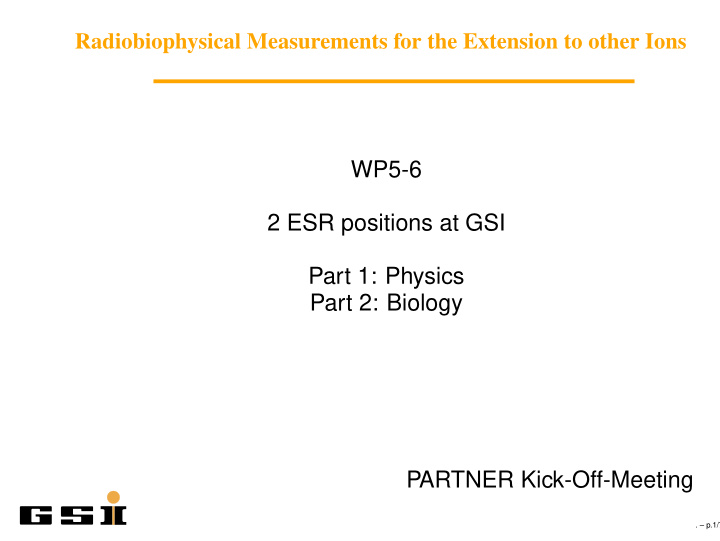



Radiobiophysical Measurements for the Extension to other Ions WP5-6 2 ESR positions at GSI Part 1: Physics Part 2: Biology PARTNER Kick-Off-Meeting . – p.1/7
Motivation 1 - Carbon or Lighter . – p.2/7
Motivation 2 - Something Heavier? (Michael Scholz) . – p.3/7
Choice of the Right Ion Protons - no advantage for radioresistant tumors, - large lateral scattering Question: Do other light ions have advantages for special tumors? Carbon + RBE: low in the entrance, enhanced in the tumor + - reduced OER but only on the last mm Heavier Ions - enhanced RBE in the entrance, more fragmentation + reduced OER Question: Is there a heavier ion with reduced OER but tolerable RBE in the entrance? . – p.4/7
WP5 - Physics T1: Training on experimental techniques for fragmentation experiments D1: Design of exp. setup for new measurements (m6) T2: Measurement of depth dose curves and fragmentation data D2: Report on physical data base (m24) T3: Implementation of the new physical data base into TRiP . D3: Demonstration of a test version of TRiP for the new ions (m36) Collaboration partner: HIT . – p.5/7
WP6 - Biology T1: Training on radiobiological work with hypoxic cells D1: Report on first OER measurements (m12) T2: Measurement of the RBE-LET and OER-LET dependence D2: Comparison of the gained biological data to model calculations (m24) T3: Extension of the measurements to extended volumes D3: 3:-dimensional biological verification of a treatment plan with the test version of TRiP for the new ions (m36) Collaboration partner: Innsbruck . – p.6/7
Milestones Physics 1. Experimental setup ready (m6) 2. Experimental data analyzed (m24) 3. Treatment planning for light ion beams (m36) Biology 1. Experimental method established (m12) 2. Experimental data analyzed (m24) 3. Treatment planning for light ion beams verified (m36) . – p.7/7
Recommend
More recommend